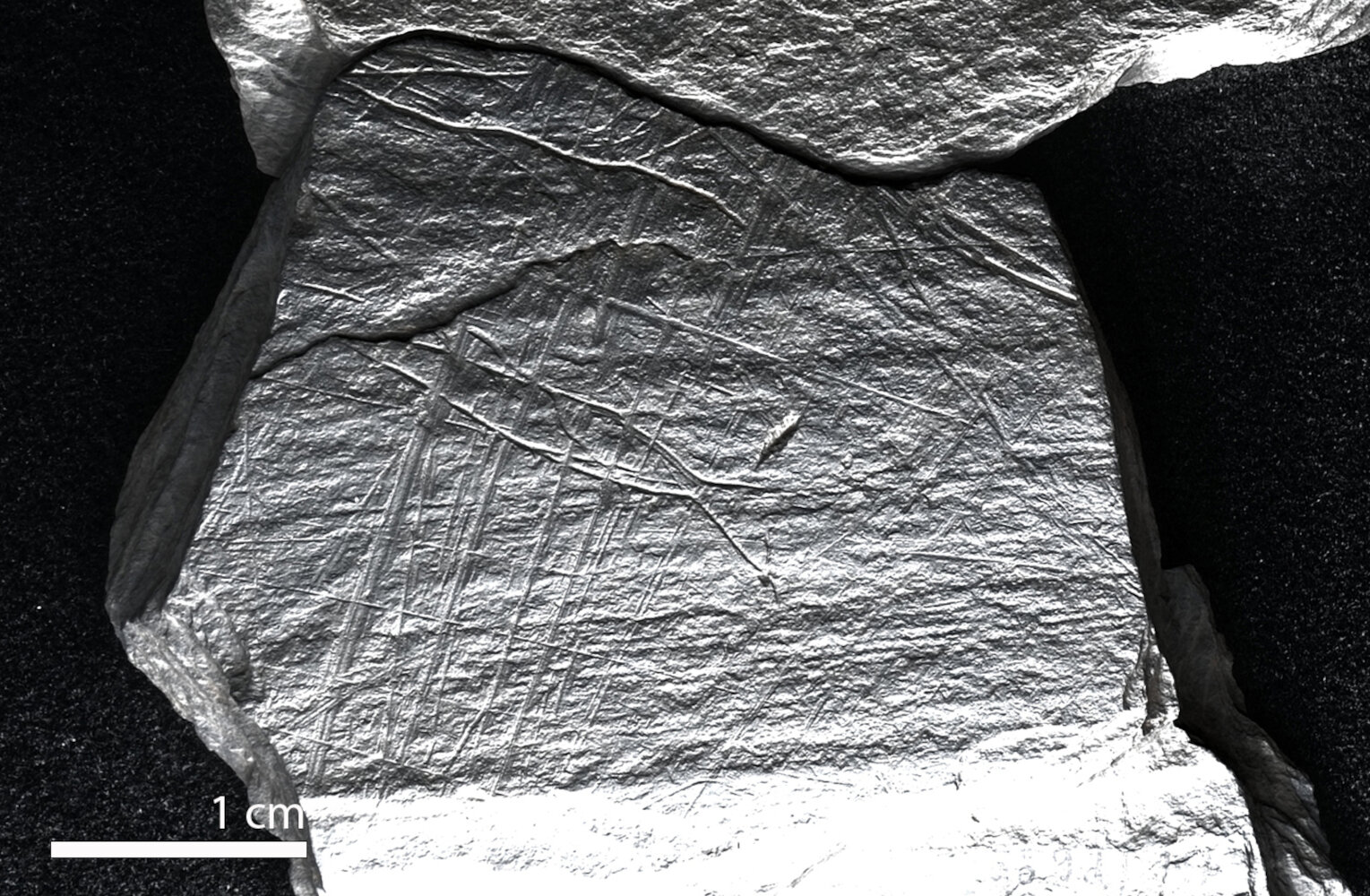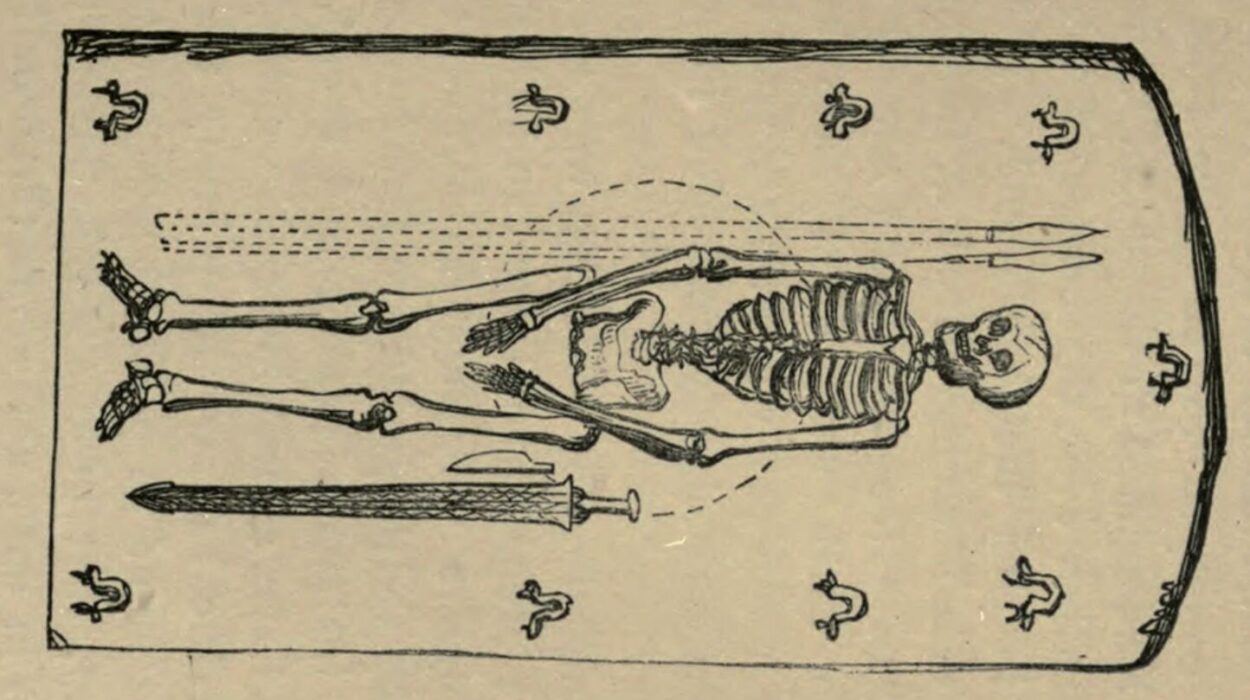Nestled along the serene banks of the Rhine, the Ice Age campsite at Gönnersdorf has long been a treasure trove of prehistoric revelations. A site renowned for its rich collection of ancient artistic artifacts, Gönnersdorf has now yielded an extraordinary discovery that reshapes our understanding of early human life. Researchers, utilizing cutting-edge imaging technology, have uncovered intricate engravings of fish on schist plaquettes, adorned with grid-like patterns believed to represent early fishing nets or traps. This discovery not only provides a deeper understanding of Paleolithic diets but also hints at the symbolic role fishing may have played in the Late Upper Paleolithic period, around 20,000–14,500 years ago.
Published in the prestigious journal PLOS ONE, this research adds a new layer to our understanding of Ice Age art, offering valuable insights into the social, symbolic, and practical aspects of early hunter-gatherer life. The team behind this groundbreaking study, led by the Monrepos Archaeological Research Center, a part of the Leibniz-Zentrum für Archäologie (LEIZA), and Durham University, have combined archaeological expertise with advanced imaging techniques to delve into the everyday lives of Ice Age humans in a way that had never been possible before.
A Rich Artistic Legacy Unearthed
Gönnersdorf is situated in an area that is historically significant not only for its archaeological value but also for its wealth of prehistoric art. The site is home to some of Europe’s most exquisite examples of Ice Age art—hundreds of small, flat schist plaquettes engraved with detailed depictions of animals that were vital to the survival of the people who lived there, approximately 15,800 years ago. Among the most notable figures are images of wild horses, woolly rhinoceroses, reindeer, and mammoths—animals that were central to the diet and survival strategies of the Late Upper Paleolithic hunter-gatherers.
In addition to these striking animal engravings, the site is famous for its depictions of stylized human females, which have sparked significant academic interest. These representations have contributed to Gönnersdorf’s global renown as a critical site for understanding the symbolic and artistic practices of prehistoric societies. Yet, until now, one area of life remained conspicuously underrepresented in the art—fishing.
The Discovery of Early Fishing Depictions
For the first time, the team working at Gönnersdorf has discovered engravings that provide the earliest known evidence of fishing techniques in European prehistory. On the schist plaquettes, they identified fish depicted alongside grid-like patterns. These patterns are believed to represent fishing nets or traps, marking a significant breakthrough in our understanding of how early humans interacted with aquatic environments.
While it has long been known that fish were a part of the Paleolithic diet, especially in regions where freshwater resources were abundant, this is the first evidence of the specific methods used to catch them. These engravings suggest that the use of nets or traps to capture fish may have been a well-established practice as early as 15,800 years ago. This discovery is a critical addition to the known repertoire of Ice Age art, as it extends the range of depicted practices beyond the more commonly represented themes of hunting and gathering.
Combining Archaeology with Visual Psychology
What sets this research apart is the interdisciplinary approach that combines archaeological analysis with visual psychology, allowing for a more nuanced understanding of the artwork and its context. Led by experts from Durham University’s Departments of Archaeology and Psychology, in collaboration with Monrepos, the research team employed advanced imaging techniques such as Reflectance Transformation Imaging (RTI). This technology uses multiple light angles to create highly detailed images, allowing researchers to discern subtle features that would otherwise be invisible to the naked eye.
RTI proved invaluable in studying the intricate engravings on the plaquettes. It revealed the fine details of the fish and the grid-like patterns associated with them, offering a clearer interpretation of how early humans may have depicted their fishing practices. Furthermore, by examining the cut marks on the plaquettes, the team was able to begin identifying different “styles” of engraving, which might reflect the work of individual artists. This opens up exciting new possibilities for understanding not just the artifacts themselves, but the people who created them.
Another fascinating element of the research involves the study of the plaquettes’ natural ridges and cracks. The researchers suggest that these features may have influenced how the engravings were designed and where they were placed. This phenomenon, known as pareidolia, occurs when the human brain interprets natural patterns—such as cracks or ridges—as meaningful shapes, much like we see faces in clouds. The team hypothesizes that the natural contours of the schist plaquettes may have guided the artists in their depictions of fish and other creatures, shaping the visual narrative in subtle but important ways.
Symbolism and Social Significance of Fishing
What makes the discovery of fishing depictions particularly compelling is the realization that fishing was not merely a practical activity—it had symbolic and social significance. The inclusion of fishing motifs alongside more typical representations of animals suggests that these practices were deeply integrated into the cultural and ritual life of the people who lived at Gönnersdorf. In the Late Upper Paleolithic period, hunting was often depicted as a symbolic act of survival and power. The addition of fishing to this artistic lexicon indicates that it may have held similar importance in the social and symbolic practices of these early humans.
Fishing may have represented a different aspect of survival—a connection to water and the resources it provided, which were as essential as the land-based animals they hunted. The grid-like patterns on the plaquettes could also hint at a more complex understanding of the environment and a sophisticated approach to resource management. It’s possible that fishing, much like hunting, was an activity laden with social meaning, linked to group identity, ritual, and even belief systems.
This discovery encourages us to rethink the social dynamics of early hunter-gatherer communities. Rather than being isolated and utilitarian, these communities were likely engaged in a rich tapestry of symbolic, social, and economic practices. Art, it seems, was not just a form of personal expression but also a way of preserving and communicating vital aspects of communal life.
Rewriting the History of Fishing Technology
The discovery at Gönnersdorf is significant not only for its artistic and cultural implications but also for its contributions to the history of technology. Fishing nets and traps are technologies that, by their very nature, are perishable. Made from materials like wood, plant fibers, and animal products, they rarely survive in the archaeological record. However, these engravings serve as a reminder that such technologies likely had deep roots in prehistoric society, long before we had written records or more durable material evidence.
This discovery challenges the common assumption that fishing technology is a relatively recent development. The Gönnersdorf engravings suggest that the techniques we associate with more modern fishing practices may have existed far earlier than previously thought. The ability to catch fish using nets or traps would have been a sophisticated and resource-efficient way to harvest from aquatic environments, providing a reliable source of food for Paleolithic communities.
Broader Implications and Future Research
The findings at Gönnersdorf are a testament to the potential of interdisciplinary research in revealing hidden aspects of ancient life. By combining archaeological analysis with advanced imaging technology and psychological insights, researchers are able to uncover new layers of meaning in ancient artifacts that were once overlooked. This approach is not only revolutionizing our understanding of Ice Age art but also opening up new avenues for exploring the complex lives of our prehistoric ancestors.
As research at Gönnersdorf continues, we can expect even more revelations about the role of art in early human societies, the symbolism embedded in prehistoric practices, and the technological innovations that shaped the development of early civilizations. These discoveries are rewriting the history of the Paleolithic era, offering us a glimpse into a world where art, survival, and symbolism were deeply intertwined.
The Gönnersdorf site, once again, proves that the past is never as distant as it may seem. Through careful analysis and innovative techniques, we are uncovering the rich and complex tapestry of human history, one discovery at a time.
Reference: Jérôme Robitaille et al, Upper Palaeolithic fishing techniques: Insights from the engraved plaquettes of the Magdalenian site of Gönnersdorf, Germany, PLOS ONE (2024). DOI: 10.1371/journal.pone.0311302






